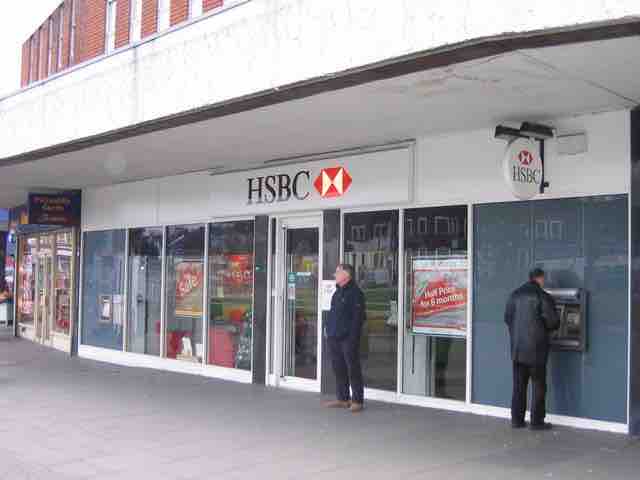Another common name for finding present value (PV) is discounting. Discounting is the procedure of finding what a future sum of money is worth today. As you know from the previous sections, to find the PV of a payment you need to know the future value (FV), the number of time periods in question, and the interest rate. The interest rate, in this context, is more commonly called the discount rate.
The discount rate represents some cost (or group of costs) to the investor or creditor. The sum of these costs amounts to a percentage which becomes the interest rate (plus a small profit, sometimes). Here are some of the most significant costs from the investor/creditor's point of view:

Borrowing and lending
Banks like HSBC take such costs into account when determining the terms of a loan for borrowers.
- Opportunity Cost: The cost of not having the cash on hand at a certain point of time. If the investor/creditor had the cash s/he could spend it, but since it has been invested/loaned out, s/he incurs the cost of not being able to spend it.
- Inflation: The real value of a single dollar decreases over time with inflation. That means that even if everything else is constant, a $100 item will retail for more than $100 in the future. Inflation is generally positive in most countries at most times (if it's not, it's called deflation, but it's rare).
- Risk: There is a chance that you will not get your money back because it is a bad investment, the debtor defaults. You require compensation for taking on that risk.
- Liquidity: Investing or loaning out cash necessarily reduces your liquidity.
All of these costs combine to determine the interest rate on an account, and that interest rate in turn is the rate at which the sum is discounted.
The PV and the discount rate are related through the same formula we have been using,
If FV and n are held as constants, then as the discount rate (i) increases, PV decreases. PV and the discount rate, therefore, vary inversely, a fundamental relationship in finance. Suppose you expect $1,000 dollars in one year's time (FV = $1,000) . To determine the present value, you would need to discount it by some interest rate (i). If this discount rate were 5%, the $1,000 in a year's time would be the equivalent of $952.38 to you today (1000/[1.00 + 0.05]).